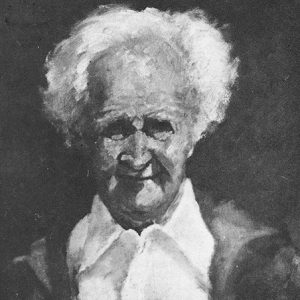calsfoundation@cals.org
James Kelly Hampson (1877–1956)
One of the few amateur archaeologists to be honored with an obituary in American Antiquity, Dr. James Kelly Hampson amassed an important collection of artifacts and cooperated with professional archaeologists working in northeast Arkansas.
James Hampson was born in Memphis, Tennessee, on July 9, 1877, to Henry Clay Hampson and Mary Sue Hanaver Hampson. He had a brother who died at an early age and two sisters. In 1879, Louis Hanauer, Hampson’s maternal grandfather, purchased Nodena Plantation, a parcel of over 3,000 acres located about twelve miles south of Osceola (Mississippi County), at a court-ordered sale. The following year, Hanauer sold the property to the firm of (Daniel Lee) Ferguson and (Henry Clay) Hampson. Hampson’s father and mother lived at Nodena until 1907.
In 1898, Hampson graduated from the College of Medicine in Memphis (now a part of the University of Tennessee Medical School). He undertook additional medical studies at the New York Polyclinic School and, after his graduation from that institution, practiced medicine for more than a quarter century at Nodena, Memphis, and Fort Smith (Sebastian County).
Around 1907, Hampson married Frances La Coste, who was born in Batesville (Independence County) and moved to Memphis as a child. Hampson retired from medicine in 1924 and moved to California for three years before returning to Nodena with his wife in 1927.
After the death of her husband, Hampson’s mother willed the plantation to Hampson and his two sisters. Hampson inherited Lower Nodena—the southern portion of the property that included the family house and outbuildings. Middle Nodena became the property of Katherine Howard Hampson, while Sue Cox Hampson received Upper Nodena.
Two well-known archaeological sites are located within the Nodena Plantation lands—Upper and Middle Nodena, which take their respective names from the portion of the plantation property on which they are located. Both sites were inhabited between about AD 1450 and 1550. Upper Nodena is the larger of these two prehistoric towns and included two fairly large flat-topped mounds and a number of smaller mounds within an area of about fifteen acres. No mounds are reported at Middle Nodena.
As a child, Dr. Hampson developed an interest in archaeological specimens, and soon after he moved back to Nodena in 1927, he began to pursue his interest avidly. Between 1932 and 1941, Hampson excavated and recorded over 1200 human burials at Upper and Middle Nodena. In 1932, he generously permitted the University of Arkansas Museum and the Alabama Museum of Natural History to conduct extensive excavations at Upper and Middle Nodena. The collections and associated field records of these institutions remain available for study to this day. Hampson himself also excavated a number of other archaeological sites in northeast Arkansas, as well as several in western Tennessee and the Arkansas Ozarks. At the time of his death, his collection included more than 40,000 items, most found and catalogued under his supervision.
Hampson died on October 8, 1956, and was survived by his wife and two daughters. After his death, Hampson’s wife graciously donated his archaeological collection to the State of Arkansas. A number of objects from the collection are displayed in what was the Henry Clay Hampson II Museum (named in tribute to Hampson’s son, who was killed during World War II). Now called the Hampson Archeological Museum State Park, it is located in Wilson (Mississippi County) and managed by the Arkansas Department of Parks and Tourism.
For additional information
Morse, Dan F., ed. Nodena. Research Series 30. Fayetteville: Arkansas Archaeological Survey, 1989.
Williams, Stephen. “James Kelly Hampson.” American Antiquity 22 (1957): 398–400.
Robert C. Mainfort Jr.
Arkansas Archeological Survey
 James Kelly Hampson
James Kelly Hampson 




Comments
No comments on this entry yet.